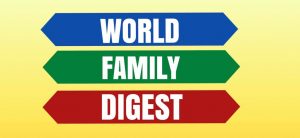How to get full clarity and control of your money in 2023.
Photo by Towfiqu barbhuiya on Unsplash
With 2023 around the corner, there’s no better time to take control of your finances.
And not only because the new year is almost here, but also because the economy isn’t in great shape (that’s an understatement):
High inflation makes everyday life much more expensive
The stock market is down more than 20% from its peak
The economic forecast for 2023 has been downgraded
The IMF (International Monetary Fund) said, “The worst is yet to come, and for people 2023 will feel like a recession.”
All in all, it’s more important than ever before to get in control of your money and start improving your finances.
 Learn More
Learn MoreRead also: 3 smart money moves nobody talks about
Set Financial Goals
Most people are used to setting goals when it comes to their health or career. But when it comes to finances, most people just seem to wing it.
But your finances — like any area of life — will only improve if you put conscious effort into it. This is where financial goal-setting comes in.
When setting goals, always be specific, set a deadline, and include your ‘why’. When you don’t do this, you’re not setting goals, you’re setting a wish.
For example:
Before the end of 2023 (deadline), I will make at least six figures with my online business (specific) so I have enough money to save and invest for my financial future (why)
Before March 31st (deadline), I will have saved $10,000 in my emergency fund (specific) so I can guarantee financial safety for my family (why)
Within six months (deadline), I will have an investment portfolio of $100k (specific) so I’ll have built the foundation for financial freedom (why)
Without setting money goals, you’ll leave your finances up to luck. And luck is not a reliable strategy for success.
If you want to improve your finances, setting goals is a must.
Track Your Expenses For 30 Days
You can’t improve your finances if you don’t know where your money is going. That’s why tracking your expenses for an entire month is incredibly valuable.
The first time I did this, I was shocked.
I thought I had a good idea of where my money was going, but actually seeing all my expenses lined up proved me wrong.
I quickly spotted about $500 worth of expenses I could save money on. Today, this extra cash goes straight toward my investment account.
If you want to track your expenses, here’s the fastest way to go about it:
Go through your bank account/credit card statements of the past 30 days and put every expense in a Google Sheet or Excel file
Add up the total amount spent in one month
Categorize expenses in broad categories (such as housing, transportation, food, fun/entertainment, eating out, clothing, hobbies, etc.) to get a good overview of where you spend the most money
Analyze where you can cut costs or come up with cheaper alternatives
(I’m thinking about creating a free monthly expense tracker, let me know in the comments if this is something you’d be interested in.)
All in all, tracking your expenses is the most fundamental step in improving your finances.
As they say, whatever gets measured gets improved.
Ask $30K Questions — Not $3 Questions
People tend to obsess over small financial decisions, while largely ignoring the most important financial decisions.
Ramit Sethi, author of I Will Teach You To Be Rich calls this the equivalent of asking yourself $3 questions versus $30,000 questions.
“Most of us are obsessed with $3 questions, but we really should be asking $30,000 questions. Get those right and you will never have to worry about how much it costs to buy coffee or an appetizer.” — Ramit Sethi
Examples of $3 questions are:
Should I make my coffee at home or get it at Starbucks?
Should I buy organic tomatoes or non-organic?
Should I cancel Netflix now that it’s a few dollars more expensive?
Should I get this appetizer or not?
These tiny expenses have almost no impact on your personal finances — yet it’s what people focus on the most.
Your time is much better spent on $30,000 questions. These ‘big ticket’ decisions actually move the needle when it comes to building wealth.
Examples of $30,000 questions are:
Can I earn more by negotiating a raise or switching jobs?
Should I start a side-hustle so I can make an extra $1000 per month?
Do I invest consistently (and automatically)?
How much am I paying in investment fees?
What’s the interest rate on this 30-year mortgage?
Can I increase my monthly savings rate to 15%?
Do I have a plan to pay off my debt?
When you get the $30,000 questions right, you don’t have to obsess over cutting back or feel guilty about spending $3 on a morning coffee.
As Ramit Sethi says, “The majority of advice you read focuses on $3 questions, making you manic about hyper-optimizing tiny things that don’t actually matter.”
Spend more time on the big financial questions — increasing your income, investing early and consistently, minimizing investment fees, and paying off your debt.
We only have so much time, energy, and decision-making power to spend on our finances, so don’t let $3 questions distract you.
Read also: 2 ways to turn money into happiness: buy experiences not stuff
Focus on the big financial decisions.
Start Budgeting (Use 50/30/20 Budgeting)
As Dave Ramsey, author of Total Money Makeover said, “The key to winning with money is simple: Budget.”
By creating a budget, you know how much money is coming in, how much you can spend (and on what), and how much you can save and invest.
A popular budgeting technique is the 50/30/20 budget plan.
With this budgeting method, you divide your monthly income (after-tax) into three big categories:
50% Needs (Housing, utilities, car payments, groceries, etc.)
30% Wants (vacations, nights out, restaurants, etc.)
20% Freedom (saving, investing, paying debt)
Of course, you can change these percentages based on your preferences and life situation (personal finance is called personal for a reason).
Nevertheless, the 50/30/20 budgeting plan is a simple method that provides more clarity and control over your finances.
Start a Side-Hustle
With the internet, it’s never been easier to start a side-hustle and make an extra $500 — $1000 per month just from your laptop.
The simplest way to start a side-hustle is to reflect on the high-value skills you already possess (because of your full-time job, for example) and offer these skills as a service or start creating content based on your expertise.
Examples of service-based side-hustles:
Designing logos on Upwork, Fiverr, or 99Designs
Ghostwriting books, blogs, or tweets
Email marketing for e-commerce
Building sales funnels for coaches/course creators
Start consulting based on your expertise
Example of content-based side-hustles:
Write on Medium about your expertise (monetize through the Medium Partner Program)
Start a weekly newsletter (monetize through sponsorships)
Start a YouTube channel (monetize through YouTube Partner Program)
Start a blog based on your expertise (monetize through Google Adsense or affiliate marketing)
Create an e-book or online course in which you teach specific skills
By starting a side-hustle, you create an extra income stream.
Having multiple streams of income not only accelerates your path to financial freedom, but also provides protection in case one of your income streams dries up (e.g. getting fired from a job).
All in all, it’s one of the best things to do if you want to improve your finances.
Upgrade Your Skills & Network
Investing in yourself — your skills, knowledge, and network — has the highest return on investment compared to most financial assets.
When you increase your skills and build your network, becoming wealthy is no longer about luck — it’s a logical long-term outcome.
That’s why even Warren Buffett said:
“The most important investment you can make is in yourself. One can best prepare themselves for the economic future by investing in their own education.”
Whether it’s through books, online courses, one-on-one coaching, or live seminars — prioritize investing in yourself.
One new insight from a book could change the trajectory of your life forever
One practical tip from an online course could make you an extra $1000 per month
One new connection from a seminar could turn into a life-long business partnership
Investing in yourself pays some of the highest dividends.
Or as Benjamin Franklin said, “An investment in knowledge pays the best interest.”
Build An Emergency Fund
Statistics show that 57% of Americans don’t have enough savings to cover a $1000 unexpected expense. But life can surprise us with financial setbacks at the worst moments:
Medical bills
Car repairs
Home repairs
Economy crashes
Job loss
High inflation
Theft
Without an emergency fund, you’re vulnerable and exposed. All it takes is one financial setback and you’re in trouble. Big trouble.
You might have to borrow money or sell your stocks to cover the payment — those are situations you don’t want to find yourself in.
That’s why building an emergency fund is essential. It can save you from a lot of financial stress and headaches.
In general, the recommended amount for an emergency fund is 3–6 months’ worth of living expenses.
Emergency Fund = Monthly Living Expenses x 3–6 Months
If you’re in your early twenties and don’t have many responsibilities, three months’ worth of living expenses could be enough.
But if you’ve got a mortgage to pay and a family to provide for, six months’ worth of living expenses might be a saver option.
Avoid The Trap of ‘Lifestyle Inflation’
People trick themselves into believing that they’ll start saving once they’ll make more money. But for most people, an increase in income usually leads to an increase in consumption.
In the personal finance space, this is known as lifestyle inflation.
As you make more money, the urge to increase your lifestyle will creep in. You might spend more money on things like:
A bigger house
Luxury vacations
Fancier restaurants
Designer handbags
A faster, more expensive car
All this lifestyle inflation keeps people stuck in the financial rat race. More money in = more money out.
Of course, it’s okay to reward yourself for your hard work. You deserve to enjoy the fruits of your labor. Just don’t let it slip out of control.
When you start to make more money, use it to secure your financial future — not just to live higher.
As Dave Ramsey said in Total Money Makeover:
“If you’re spending all the extra money you’re making, it’s nearly impossible to get ahead — no matter how much income you bring in.”
If you want to get ahead in your financial life, you need to learn it’s not about looking rich, it’s about becoming rich.
Looking rich is about spending your money on expensive items and luxury experiences.
Becoming rich is about investing your money in financial assets that pay you more money in the future.
The more money you spend on looking rich, the less money you’ll have to actually become rich.
All in all, keep lifestyle inflation under control.
Invest In Index Funds
Many beginning investors think investing is about picking individual stocks that will do well in the future.
Not only is this method time-consuming and incredibly difficult, it usually leads to losing money instead of making money.
The best way to get started (by far) in the stock market is by investing in index funds such as the S&P 500.
The S&P 500 index consists of the 500 most valuable companies listed on the US stock market. By investing in an S&P 500 index fund, you instantly own a small portion of these 500 top companies.
For the past 70 years, the S&P 500 has returned 10.2% on average per year. This is a better return than most investors (including professionals) tend to achieve:
Studies show the average investor underperforms the S&P 500 by 3–4% per year
90% of investment professionals fail to beat the S&P 500 in the long run
Even Warren Buffett, who made his fortune picking individual stocks said, “By periodically investing in an index fund, the know-nothing investor can actually out-perform most investment professionals.”
Index funds won’t make you rich fast. The power of index funds comes from long-term investing so compound interest can run wild.
For example, if you invest $5,000 per year into an S&P 500 index fund, you could end up with (assuming the historical 10.2% annual return):
$80,455 after 10 years
$292,961 after 20 years
$854,250 after 30 years
$2,336,778 after 40 years
$6,252,561 after 50 years
All in all, index funds are one of the easiest — yet most powerful — wealth-building tools available.
As said in The Bogleheads’ Guide To Investing:
“Index fund investing takes very little investment knowledge, no skill, practically no time or effort — and outperforms about 80 percent of all investors. It allows you to spend your time working, playing, or doing anything else while your nest egg compounds on autopilot.”
ATTENTION: 🌹DEAR FARMERS, HERE ARE 5 SECRETS THAT A BILLIONAIRE FARMER TOLD ME ON FARMING SUCCESS HERE
Automate Your Finances
As David Bach said in The Automatic Millionaire, “Having worked with clients as a financial advisor for many years, I can tell you that the only plans that work are the ones that are automatic.”
Within most banks, brokerage firms, and mutual funds, you can automate your investments.
Simply decide how much you want to invest, in which funds, and how frequently (e.g. once a month) and you’re good to go.
“The secret to creating lasting financial change is to decide to pay yourself first and then make it automatic.” — David Bach (in The Automatic Millionaire)
Personally, I’ve set up the following automation with my broker:
Every Tuesday, invest $250 in an S&P 500 index fund and $250 in a Nasdaq 100 index fund.
The power of automating your investments is that you set it up once and it requires no more effort afterward.
You’re literally building wealth on autopilot.
CONTRIBUTED BY Jari Roomer
For more information and updates join our WhatsApp group HERE
Like our page on Facebook HERE
Join our Telegram group HERE













![The 17 Habits Of Truly Wealthy People That you can easily adopt now [Real powerful stuff]](https://worldfamilydigest.com/wp-content/uploads/2022/02/FA033A84-800B-424D-8DEA-2BB8AD9E91F6-100x70.jpeg)

